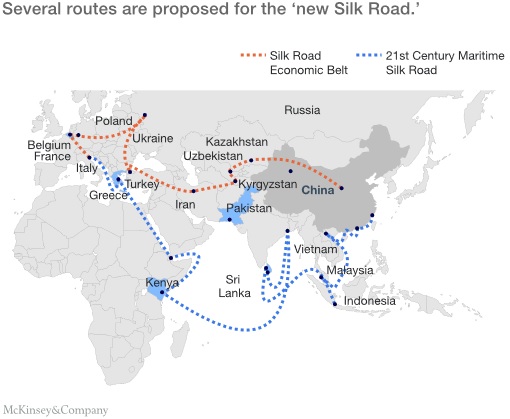China is leading the effort to create the world’s largest economic platform – One Belt, One Road, Connecting China

China is leading the effort to create the world’s largest economic platform – One Belt, One Road, Connecting China
March, 2018
More than 2,000 years ago, China’s imperial envoy Zhang Qian helped to establish the Silk Road, a network of trade routes that linked China to Central
Asia and the Arab world. The name came from one of China’s most important exports—silk. And the road itself influenced the development of the entire
region for hundreds of years.
In 2013, China’s president, Xi Jinping, proposed establishing a modern equivalent, creating a network of railways, roads, pipelines, and utility grids that
would link China and Central Asia, West Asia, and parts of South Asia. This initiative, One Belt and One Road (OBOR), comprises more than physical
connections. It aims to create the world’s largest platform for economic cooperation, including policy coordination, trade and financing collaboration,
and social and cultural cooperation. Through open discussion, OBOR can create benefits for everyone.
The State Council authorized an OBOR action plan in 2015 with two main components: the Silk Road Economic Belt and the 21st Century Maritime Silk
Road (exhibit). The Silk Road Economic Belt is envisioned as three routes connecting China to Europe (via Central Asia), the Persian Gulf, the
Mediterranean (through West Asia), and the Indian Ocean (via South Asia). The 21st Century Maritime Silk Road is planned to create connections
among regional waterways. More than 60 countries, with a combined GDP of $21 trillion, have expressed interest in participating in the OBOR action
plan.
Exhibit
